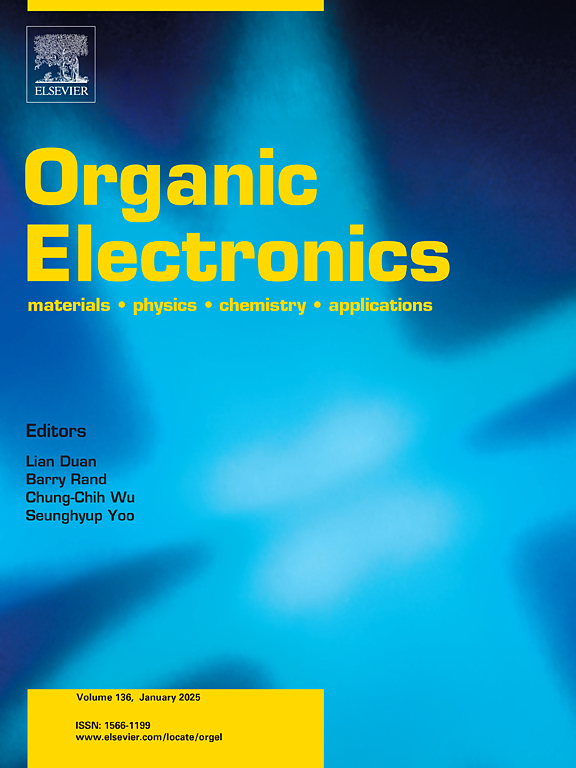Molecularly imprinted (3, 4-ethylenedioxythiophene) polymer based electrochemical non-enzymatic glucose sensor
IF 2.7
4区 工程技术
Q3 MATERIALS SCIENCE, MULTIDISCIPLINARY
引用次数: 0
Abstract
Glucose plays a pivotal role as a vital biological marker in the diagnosis of diabetes, showcasing its potential utility for the early detection of diabetes mellitus (DM) in this study. Hence, a glucose sensor was developed for the non-enzymatic measurement of glucose. This sensor utilizes a molecularly imprinted polymer (MIP) attached to a conducting poly(3, 4-ethylenedioxythiophene) (PEDOT) layer. Here, the monomer EDOT was electropolymerized on a screen-printed carbon electrode (SPCE) with template glucose present to create the sensitive layer. Furthermore, electrochemical characterizations were performed using cyclic voltammetry (CV), differential pulse voltammetry (DPV), and electrochemical impedance spectroscopy (EIS) on a PBS solution containing 5 mM K4[Fe(CN)6]/K3[Fe(CN)6] as a redox probe. Using scanning electron microscopy (SEM), the generated sensors were morphologically described. Specifically, this glucose sensors linear response was within the range of 0.5 mM–6.5 mM, and its low detection limit was 0.025 mM (sensitivity: 0.036 mM μA−1). Moreover, the applicability of the technique was successfully confirmed with the detection of glucose in biological (human plasma) samples. Our study demonstrated a low-cost, simple, and effective sensing platform for non-enzymatic glucose detection, making it a feasible tool for the future progress of accurate and reliable non-invasive diabetes mellitus diagnosis.

分子印迹(3,4 -乙烯二氧噻吩)聚合物基电化学非酶葡萄糖传感器
葡萄糖作为一种重要的生物标志物在糖尿病的诊断中发挥着关键作用,在本研究中显示了其在糖尿病(DM)早期检测中的潜在效用。因此,一种葡萄糖传感器被开发用于葡萄糖的非酶测量。该传感器利用分子印迹聚合物(MIP)连接到导电聚(3,4 -乙烯二氧噻吩)(PEDOT)层。在这里,将EDOT单体电聚合在带有模板葡萄糖的丝网印刷碳电极(SPCE)上以形成敏感层。此外,利用循环伏安法(CV)、差分脉冲伏安法(DPV)和电化学阻抗谱法(EIS)在含有5 mM K4[Fe(CN)6]/K3[Fe(CN)6]作为氧化还原探针的PBS溶液上进行电化学表征。利用扫描电子显微镜(SEM)对生成的传感器进行了形貌描述。该传感器线性响应范围为0.5 mM - 6.5 mM,低检出限为0.025 mM(灵敏度为0.036 mM μA−1)。此外,该技术的适用性已成功地通过检测生物(人类血浆)样品中的葡萄糖得到证实。我们的研究展示了一种低成本、简单、有效的非酶促葡萄糖检测传感平台,为未来准确、可靠的无创糖尿病诊断提供了可行的工具。
本文章由计算机程序翻译,如有差异,请以英文原文为准。
求助全文
约1分钟内获得全文
求助全文
来源期刊

Organic Electronics
工程技术-材料科学:综合
CiteScore
6.60
自引率
6.20%
发文量
238
审稿时长
44 days
期刊介绍:
Organic Electronics is a journal whose primary interdisciplinary focus is on materials and phenomena related to organic devices such as light emitting diodes, thin film transistors, photovoltaic cells, sensors, memories, etc.
Papers suitable for publication in this journal cover such topics as photoconductive and electronic properties of organic materials, thin film structures and characterization in the context of organic devices, charge and exciton transport, organic electronic and optoelectronic devices.
 求助内容:
求助内容: 应助结果提醒方式:
应助结果提醒方式:


